Bhakhra (Bihar)/Nagepur (Uttar Pradesh): A poster with a smiling image of Prime Minister Narendra Modi greets people entering the tiny, decrepit Bhakhra village in Pataliputra district of Bihar. It is an announcement of his vision to double farmers’ incomes by 2022.
But to most farmers in the village, the poster is ironic, not aspirational.
Prem Kumar who cultivates masoor dal and wheat, sits with his chin sinking low into his chest. He says PM Modi’s words mean little to him at a time when his family is nose-deep in debt. “These are just words…Words don’t double incomes,” he says.
Over the last three years, Kumar has taken loans worth Rs 2 lakh — money that he has used for agriculture, to marry off his daughter, and even to meet his family’s daily needs.
With sub-optimal produce this year, patchy government aid, and rising inflation, Kumar, who owns 5 bighas of land, says the only way to repay the debt is to sell his land, and look for alternative ways to earn a livelihood.
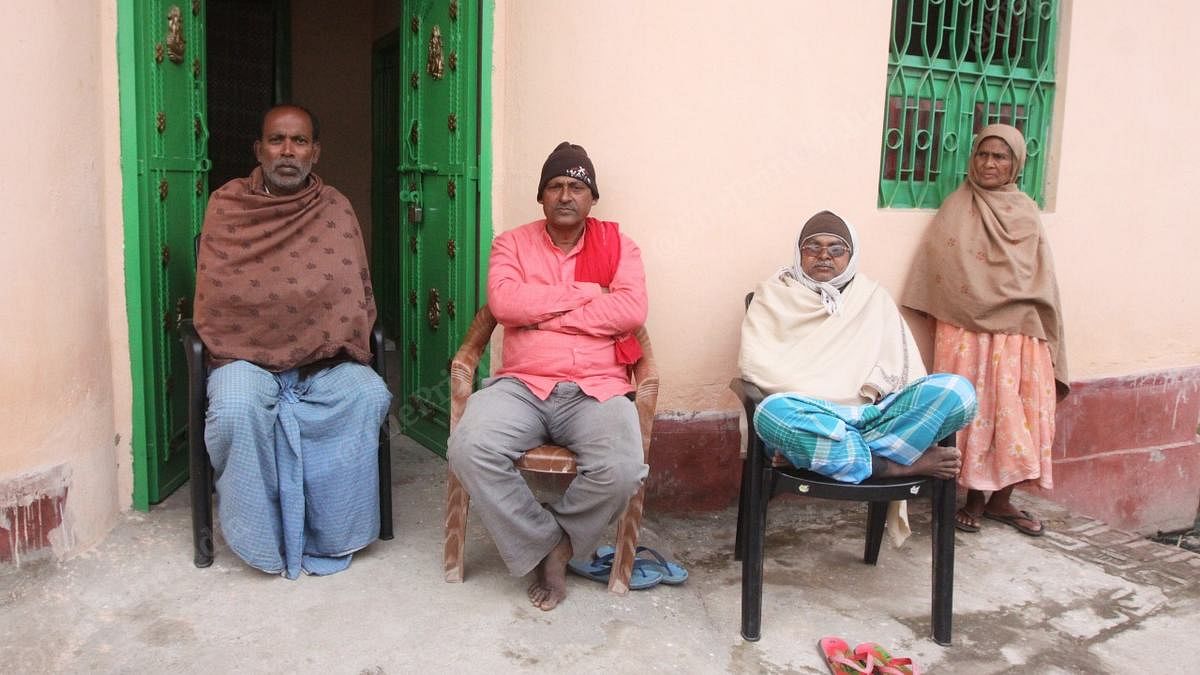
His friends — all middle-aged, debt-ridden farmers like him — join the conversation as they slouch beside the road. “We all think we should sell our land, and become daily-wage labourers,” says Sanjay Kumar. “The farmer is only continuing to farm to save his honour, not to fill his stomach.”
In the countryside, where farming enjoys a degree of social prestige as opposed to daily wage labour, the occupation is becoming increasingly less lucrative. The central government is exploring ways to double farmers’ income by 2022 — a goal which, according to the NITI Aayog’s estimates, would need the farmers’ income to grow at 10.4 per cent.
The NITI Aayog report says “the country took 22 years to double farmers’ income at an annual growth rate of 3.31 per cent during 1993-1994 to 2015-16; doubling farmers’ income between 2015-16 and 2022-23 will require an annual growth rate of 10.4 per cent in farmers’ real income”. However, the government has not released any data on farmers’ income growth rate after 2013, making it unclear exactly what it wishes to double the income from.
Meanwhile, farmers across Uttar Pradesh and Bihar say that it is their debt levels, and not their income levels, which have soared over the last two or three years.
Why farmers are being driven to debt
Rural distress has been visible in India in the last few years. Two consecutive years of drought in 2014 and 2015, along with a lack of remunerative minimum support prices, have aggravated the farmers’ plight, leading to a fall in real incomes and a rise in debt levels. This has led to many state governments, including the Uttar Pradesh government, announcing a debt waiver.
The BJP’s 2014 Lok Sabha election manifesto had assured farmers 50 per cent profits on their production cost. When it went back to them seeking another term in 2019, the party asked farmers to wait until 2022 to have their incomes doubled.
But soon after coming to power, the government admitted in Parliament that farmers’ incomes cannot be doubled by 2022 at the current growth rate.
Agricultural GDP growth too has been sliding. While the GDP growth in this sector in 2017-18 was 5 per cent, the year 2018-19 ended with a growth of 2.75 per cent.
The Modi government has almost doubled the total allocation across central and centrally sponsored schemes in agriculture from Rs 75,753 crore of the revised 2018-19 budget to Rs 1,38,564 crore in 2019-20, but the impact on the ground has been patchy, pushing more people to take loans.
According to a financial inclusion survey conducted by the National Bank for Agriculture and Rural Development (NABARD) in 2018, 52.5 per cent of all agricultural households in India were indebted, with an average debt of Rs 1.04 lakh.
While official data since 2018 is not yet available, villagers across Uttar Pradesh and Bihar say they have taken more loans in the last two years than they did before.
“The rate at which we sell our produce has constantly been falling,” says Prem Kumar, a father of four. “The masoor dal which I sold for Rs 6,000 a quintal is being sold at Rs 4,000 now… How will I manage if not by taking loans? The whole crop got destroyed after unseasonal rains, and I am yet to get a penny of compensation from the government.”
Also read: India’s agriculture departments are complex. But Odisha is using data to fix it
PM-Kisan a ‘mockery’, crop insurance doesn’t work
While Kumar did receive Rs 6,000 as minimum income support under the Pradhan Mantri Kisan Samman Nidhi, he called the scheme “a mockery” of the plight of Indian farmers.
“We spend Rs 12,000-15,000 on one bigha alone in one season… and the government wants to give me just Rs 6,000 for the whole year? Yeh samman nahi, mazaak hai. (This is not dignity, this is mockery),” Kumar says.
Most farmers complained that they received no money under the Pradhan Mantri Fasal Bima Yojana, which aims to provide insurance cover against crop failure in a bid to stabilise farmers’ incomes.
While Kumar managed to get a bank loan, farmers with less access to institutional loans across Bihar have to turn to microfinancing from women’s self-help groups.
“Banks don’t give us personal or agricultural loans since we don’t own any land… They ask us various things, ask for papers, but then say they can’t give us a loan,” says Meena Devi from Kulhariya village in Kamur district of Bihar, who has been a part of one such self-help group for the last 10 years.
Devi had taken a loan of Rs 80,000 from her collective. To repay the loan, she is supposed to pay back Rs 800 every week to the collective. But as her family’s financial condition deteriorates rapidly, she is unable to pay up her dues.
“We have always depended on our collective for money, but increasingly, we are using this money for dal-roti also,” Devi says as she takes a break from her farm work. “I failed to deposit the money (Rs 800) last week, so I had to mortgage my bicycle.”
The menace of stray cattle
In Uttar Pradesh, stray cattle have become a problem for farmers — they are destroying large parts of their crops. In this situation, farmers have had to depend on loans through the Kisan Credit Card (KCC).
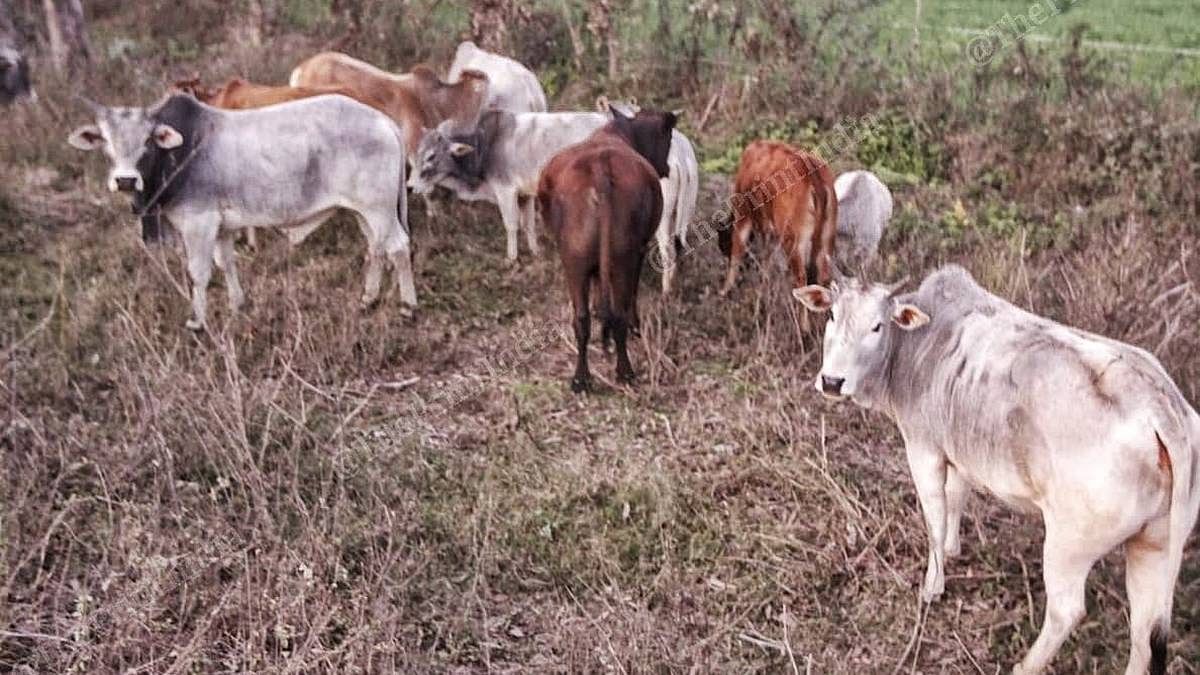
“I have to use bank money for everything now,” says Amardev Sharma, who lost his job as unit manager at ICICI Bank in 2018. Sharma, who lives in Jatpura village in Ghaziabad district of UP, confesses that while he has taken a loan of Rs 1 lakh from the local gramin (village) bank, he does not plan to repay it.
Last month, a pack of stray cattle went on a rampage and destroyed Sharma’s sugarcane field. “I went away for an hour, and when I came back, this pack of stray bulls had destroyed everything… What could I have done? I fell on my knees and broke down,” he says. “We are Hindus, so we cannot even say anything… But where does the Hindu farmer go?”
It is a sentiment shared by many in the state. After the Yogi Adityanath government in UP imposed an inviolable ban on cow slaughter, cows who go “dry” or stop lactating are simply abandoned by their owners. These uncared for, abandoned cows are, in turn, wreaking havoc on the countryside.
“Show me one farmer who is not crying about this menace… But we have nowhere to go,” Sharma says. “Now, when this is the situation, and the government wants to do nothing about it, how does one repay loans?”
Also read: Young, educated, jobless: These men in UP villages have nothing to do but play cricket
The bad loan problem
Sharma is not the only one to take a loan without intending to repay it. Across the countryside, banks complain of rising NPAs, with farmers either unable to repay loans or deliberately choosing not to.
“I can tell you that we do not get back 90 per cent of the loans we give out,” says Pankaj Sundriyal, who works as a manager in a gramin bank in Rae Bareli.
“They take the loan, wait for the government to announce a loan waiver, and then come back to take more loans… Phir aap bhejte rahiye notice in barsati mendhakon ko (Then you can keep sending notices to these people, who only come out like frogs in the rainy season),” he says.
Sundriyal’s view is shared by several economists, including former Reserve Bank of India governor Raghuram Rajan, who had warned that far from resolving agricultural crises, loan waivers kill the credit culture.
According to the latest data, the trend of loan waivers, the general slowdown in the economy, low price realisation and rural distress have ensured that the State Bank of India’s gross Kisan Credit Card-NPAs doubled to 16 per cent by September 2019 from 8 per cent in 2016-17.
The total outstanding loans under Kisan Credit Card amount to Rs 7.09 lakh crore, with UP having the biggest share, Rs 1.09 lakh crore.
Exploitation through informal lending
However, bank loans are only half the problem. There are several small farmers and casual labourers who have no access to credit from banks, and rely on borrowing through informal, often abusive, village networks.
Chinta Devi, who lives in the under-served Dalit ghetto of Jayapura village in Varanasi district of UP — one of the two villages PM Modi has adopted under the Saansad Adarsh Gram Yojana — has racked up a debt of Rs 2 lakh, which seems unrepayable to her. However, like many Dalit families in this village, Chinta Devi has taken this loan from a powerful Thakur family at a high rate of interest — 10 per cent.
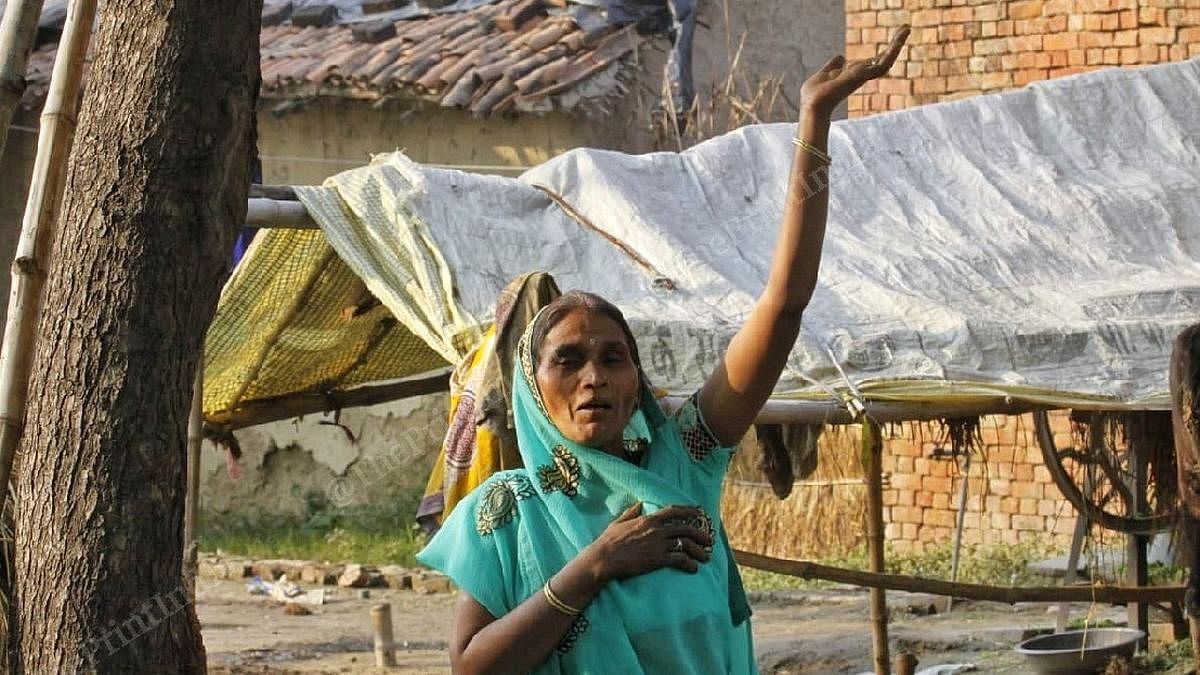
“For every Rs 100, they charge an interest of Rs 10,” she says. “But over the last two years or so, we have had no option but to take loans from them… And because we could not repay it, I have to work in their fields for no remuneration,” she says.
‘MGNREGA is dead’
Across rural Uttar Pradesh, those living on or below the poverty line — especially those belonging to the Scheduled Castes — say that since the BJP government came to power in the state in 2017, work under the Mahatma Gandhi National Rural Employment Guarantee Act (MGNREGA) has become increasingly scarce. MGNREGA is a flagship central scheme which seeks to provide at least 100 days of guaranteed wage employment in a financial year to every rural household that demands work.
“We don’t get work under MGNREGA for more than 10-20 days a year now… When Akhilesh Yadav was in power (2012-17), we would get at least 60-70 days’ work,” says Santosh Kumar, a labourer from Nagepur — the second village adopted by PM Modi. “For the last three years, MGNREGA in this village is dead.”
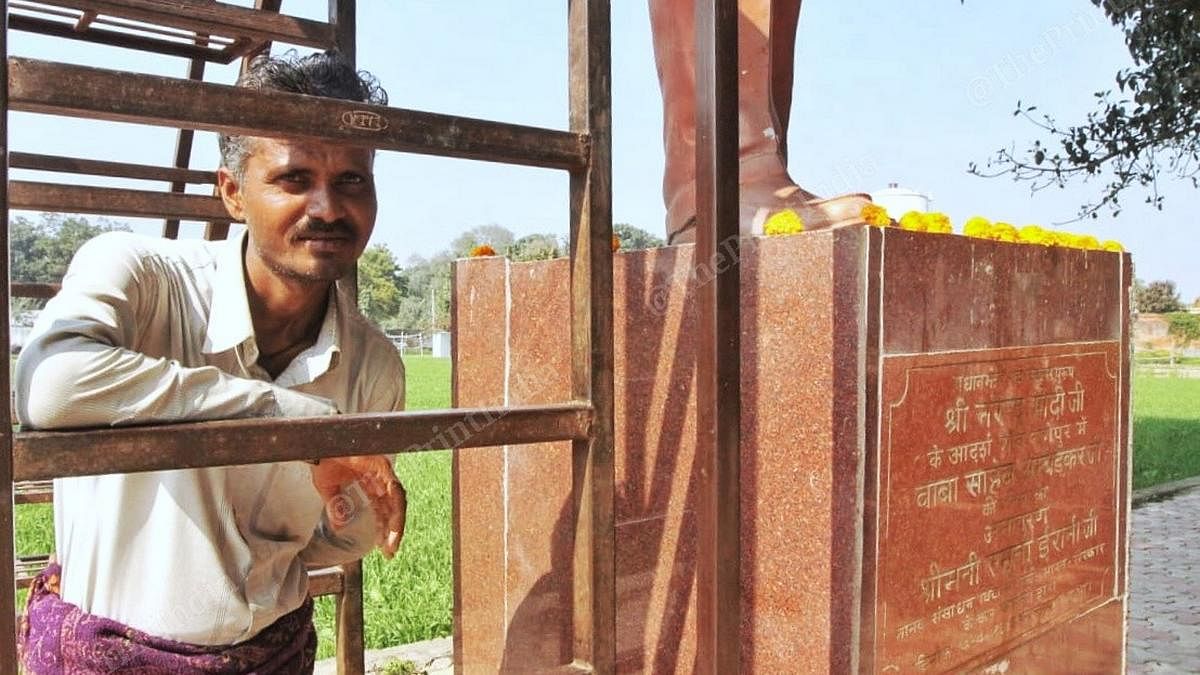
As work under MGNREGA becomes scarce and wages for farm labour shrink, many Dalit families in particular are getting trapped in debt cycles that are often deeply exploitative. “You can say that over 60 per cent of the Dalit families have taken loans from the Thakurs in the last year or two,” says Rahul, a contractual labourer and a relative of Chinta Devi in Jayapura.
According to data from the Ministry of Rural Development, the overall average number of days for which work was generated in UP rose to 41.87 in 2019-20 from 37.35 in 2017-18. The national average fell to 42.33 in 2019-20 from 45.69 in 2017-18.
However, the data also corroborates the claims of Dalit families. Since the Yogi Adityanath-led BJP government came to power in UP in March 2017, the average number of days for which work was generated per Dalit household fell to 29.08 in 2019-20 from 34.07 in 2017-18.
As possibilities of contractual work in the private sector shrink in the face of the economic slowdown, employment generated under MGNREGA, meant to be a safety net for poor, workless families, is also diminishing.
“At the macro level, over the last 5-7 years, there are massive pending liabilities under MGNREGA,” says Yamini Aiyar, president of the Centre for Policy Research (CPR). “Also, at the level of some state governments, it is being observed that they are not responding to the work demand,” she adds.
This is despite the fact that the BJP-led central government has continued to increase the spending on MGNREGA since coming to power. For 2019-20, the government allocated Rs 60,000 crore in the budget, an all-time high.
“The money comes to the district level, everyone knows it… But nobody is getting work,” says Santosh Kumar. “Our situation is going from bad to worse, but despite the money coming in, we are getting no employment.”
Also read: Maggi, fridge, clothes, mobile data, booze — nothing is selling in slowdown-hit rural UP



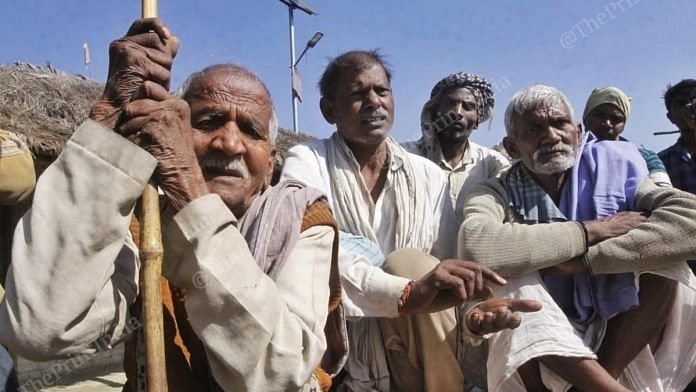



Modi wants to double farmers’ income by 2022. Oh Baba that is growth of 24% per annum from tomorrow to Dec 31, 2022. When you know hits the fan, it is this way only. Just watch.
At the present rate of growth, ignoring the power of compounding, it will take fifty years to double farmers’ incomes. Our Ananya will be wheeling her grandchildren in a pram on East Coast Park.